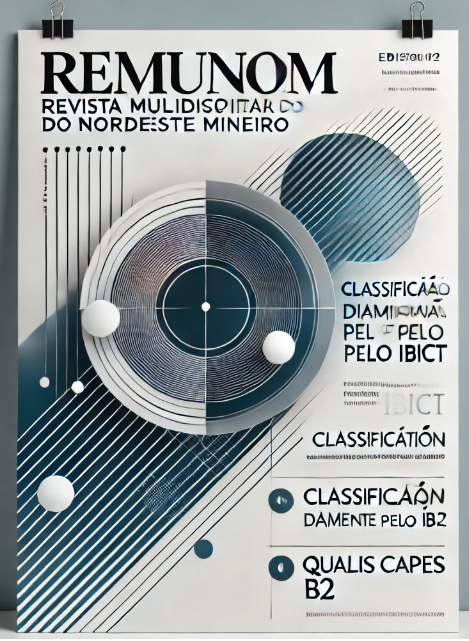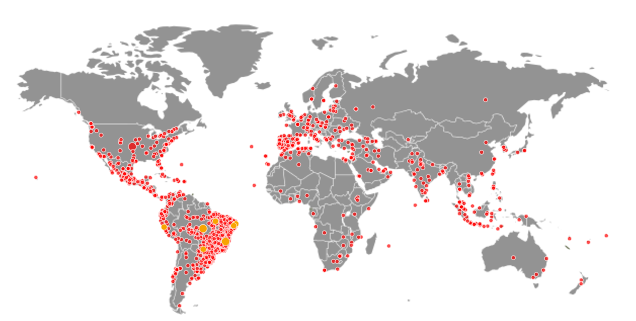Castellano Estímulos visuales y reacciones psicomotrices em esgrima
DOI:
https://doi.org/10.61164/rmnm.v5i1.3680Keywords:
Equilibrio postural. Estímulos Tácteis. Tiempo de movimiento Tiempo de reacción.Abstract
Fencing, like tennis, is a one-sided sport and is played with a mediating instrument (foil, saber, épée; racket in tennis), and this equipment have different weights. The foil weighs 0.5 kg; the saber should weigh less than 0.77 kg, usually 0.5 kg; and the épée weighs 0.77 kg; The tennis racket, on the other hand, weighs about 0.30 kg. This involves a one-sided use of the body's muscles. The aim of this study was to evaluate the accuracy of movement and motor behavior of sensorimotor responses corresponding to each motor stimulus. We applied to Physical Education students at the Federal University of Paraná (UFPR), during Fencing classes and we searched the literature on athletes to compare the psychomotor variables. These variables are linked to natural components necessary for an athlete, such as cognition, perception, memorization, attention, and reasoning.
Keywords: Postural balance. Tactile stimulus. Fencing. Movement time. Reaction time
References
Abernethy B. Training the visual-perceptual skills of athletes: insights from the study of motor expertise. Am J Sports Med 1996 Vol. 24 p. 589-592.
Abernethy B, Wood JM, Parks S. Can the anticipatory skills of exper ts be learned by novices? RQES 1999; 70(3) p. 313-318.
BARR KP, Griggs M, Cadby T. Lumbar stabilization: core concepts and current literature, part 1. Am J Phys Med Rehabil;2005.
BORYSIUK, Z. Pshicomothor reactions in fencing dependence of stimuli type; Brazil; 2008.
BORYSIUK, Z. Factors determining sport performance for fencers at the preliminary and championship stages of their training. In: 5th Annual Congress of the European College of Sports Sciences. Book of Abstracts. Jyvaskyla. 2000, p.386.
BORYSIUK, Z., ZMARZLY, D. Surface electromyography (sEMG) as a research tool of psychomotor reactions. Annales Universitatis Maria Curie-Sklodowska 2005; 60, Suppl 16 (1) p.188-192.
CZAJKOWSKI, Z. Understanding Fencing: the unity and practice. Staten Island: SKA Swordplay Books; 2005.
CZAJKOWSKI, Z. Theory, practice and methodology in fencing. Advanced course for fencing coaches. Katowice: AWF. 2001
DE LUCA, CJ. The use of surface electromyography in biomechanics. J Appl Biomech 1997; 13 p 135-163.
ENOKA, R. Neuromechanics of human movement. Champaign, 3rd ed.: Human Kinetics, 2002.
EVANGELISTA, N. The inner game of fencing: excellence inform, technique, strategy and spirit. Lincolnwood, Illinois: Master’s Press; 2000.
GASPAROTTO, G. DA S. e DOS SANTOS, S.L.C. Produção científica Nacional sobre o Ensino de lutas no ambiente escolar: estado da arte. Conexões: revista da Faculdade de Educação Física da UNICAMP, Campinas, v. 11, n. 4, p. 46-58, out. /dez. 2013.
KAMAL, H.; MONA, M. Attention, Visual Perception and their Relationship to Sport Performance Fencing. Journal of Human Kinetics volume 39/2013.
KANDEL ER, Schwarz JH, Jessell TM. Principles of neural science. New York: McGraw-Hill; 2000.
KELSO J. Dynamic patterns: the self-organization of brain behavior. Cambridge: MIT Press. 1995
KOLBER, M.J.; BEEKHUIZEN, K. Lumbar stabilization: an evidence-based approach for the athlete with low back pain. Strength and Conditioning Journal 2007.
LUCE, R.D. Response times: their role in inferring elementary mental organization. New York: Oxford University Press; 1986.
LUKOVICH I. Electric foil fencing: advanced competitive training. Staten Island: SKA Swordplay Books; 2003.
LUKOVICH I. Fencing. Debrecen: Alfoldi Printing House; 1986.
POULTON, E.C. On prediction in skilled movements. Psychological Bulletin; 54, p. 467-478. 1957
SADOWSKI, J. Studies of selected elements of movement coordination in taekwondo athletes. Biała Podl.: Rocz. Nauk. IWFiS, 1999; v 5, p.37-40.
SALCZENKO, I.N. Dwigazjelnyje wzajmodijestwija sportsmienow. Kijew: Zdorowje; 1980.
SCHACK, T. High speed scanning in movement-based memory - experimental studies in free climbing. J Sport Exercise Phycology 2003; V 25, p. 116-117.
SCHMIDT, R. Motor learning and performance. Champaign: Human Kinetics Publishers, 1991.
STARKES, J.L. Ericsson K.A. Expert performance in sports. Champaign: Human Kinetics, 2003.
SZABO, L. Fencing and the master. Budapest: Corvina Kiado; 1977.
TYSHLER, D.; TYSHLER, G. Fencing. Moscow: Physical Education and Science Press; 1995. WILLIAMS, A.M.; GRANT A. Training perceptual skill in sport. Int J Sport Psychology 1999; 30; p. 194-220.
WELFORD, A.T. Choice reaction time: basic concepts. In: Welford AT. Reaction times (Ed.) New York: Academic Press; 1986. p.73-128.
WELFORD, A. Motor skill and aging. In: Nadeau C, Halliwel W, Newell K, Roberts G, (Eds.) Psychology of motor behavior in sport. Champaign, IL: Human Kinetics, 1980. p.253-268.
Downloads
Published
How to Cite
Issue
Section
License
Copyright (c) 2025 Revista Multidisciplinar do Nordeste Mineiro

This work is licensed under a Creative Commons Attribution-NonCommercial-ShareAlike 4.0 International License.




